I ran my first 50k of 2022, the Big Chief 50k – a race I did last year as well. It’s a beautiful, challenging course in Truckee, CA.
In my race recap, I write about the following:
- My experience with COVID in training
- How I used live-time CGM data to make fueling decisions
- How the elevation impacted me and the ideal time to acclimate to elevation
- All the rookie mistakes I made this time around
- My overall experience from the Big Chief 50k!
Overall race:
The Big Chief 50K begins at Northstar Resort as you begin to run up the hills alongside the ski lifts.

Elevation Chart: Big Chief 50K
Aid stations: Mile 3, 11, 17, 23, 27
The early miles are some of the steeper climbs of the race prior to mile 25. It’s well shaded during the early part of the race, while the hills at mile 25 (when it actually is hot) are fully exposed. This year seemed to be hotter than last year and was hot from the very start, unlike last year where the heat kicked in late in the race.
After mile 7, you see some great views of Lake Tahoe. Some point after mile 15, you run into some really technical parts where you’re running over granite and small rocks.
In the middle of the race, you run along sharp rocks. Last year, I had no trouble with it. This year, each step was hurting the soles of my feet. There are lots of jagged areas where you have to pay close attention to your footing – I saw a lot of people covered in dirt by the end of the race.
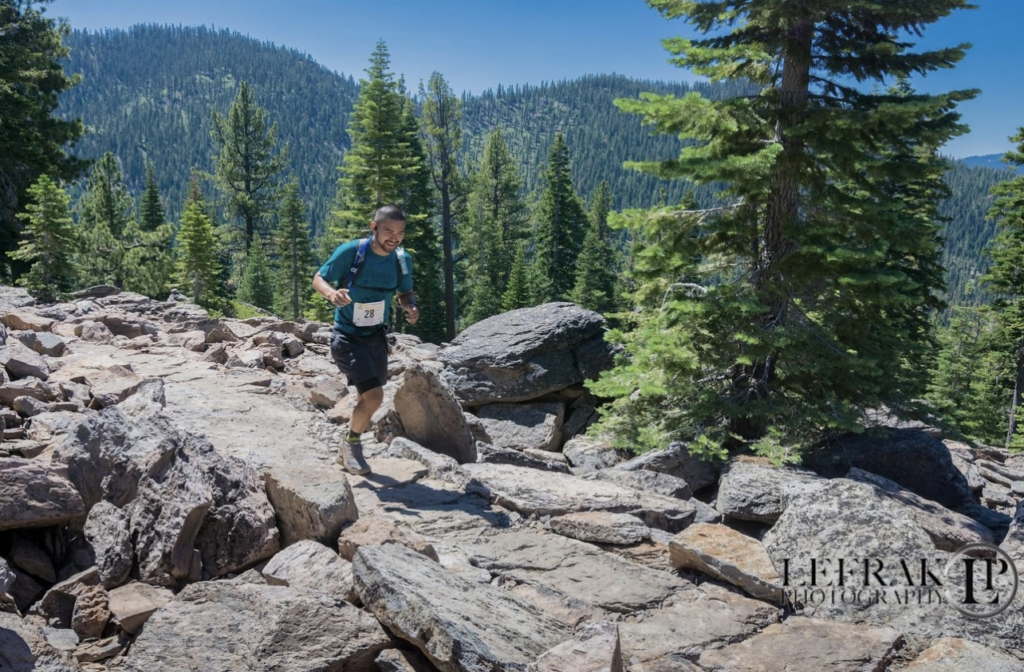
The part of the Big Chief 50K that I dreaded was mile 25 on, which for the most part is straight up hill from the lowest point to the highest point of the race entirely exposed to the sun. But as this was my second year running the race, I was very familiar with the course and paced myself accordingly.
Similar to last year, this was a tough year with a lot of DNF’s. Half of the course this year did not finish.
My COVID experience:
This year’s training load has been much less than last year, when I ran every day in 2021. I’ve been involved in a move in the early part of the year and set some financial goals – so my fitness has lagged behind this year. I came into training with a lower overall base than last year.
Surprisingly, I was able to knock out some long training runs of 18 and 20 miles out with ease. Then 4 weeks prior to the race, I got COVID. I would consider my case mild, but also felt like it lingered for quite a while, where I didn’t feel fully myself. It’s something that I can’t really put my finger on, though, and a feeling that I believe most people dismiss and pridefully say that they are back at 100%. I didn’t have any fever, temperature, headaches, aches, or any other measurable symptoms, just felt like 80% of myself for about 2 weeks.
My timeline with COVID was as follows:
4 weeks prior to race: No running due to COVID
- 2 days of high fevers: This was rough! Temperatures +4 degrees over my baseline, my resting heart-rate at 59bpm (normally 40bpm) and HRV at 20 ms (normally ~60 ms)
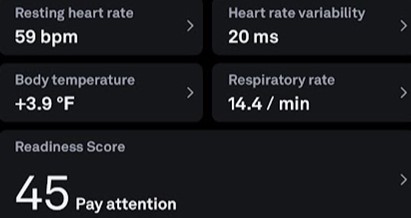
- 5th day: First negative test. After 2 days of high fevers, I mainly slept the next few days and recovered. No symptoms really other than fatigue, and I allowed my body to recover as needed.
3 weeks prior to race: Short 5k’s in an isolated area, no long run
- 10-days of quarantine: I continued to quarantine to follow 10 day quarantine quideline, despite being negative. I started running 5K’s around my block, because nobody’s ever there. But I skipped running on the crowded Los Gatos trail and as a result skipped my long weekly run (for the 2nd week in a row).
- My first post-COVID run was a 5k at a 7:28 pace, but it felt much harder than it should’ve been. I definitely had some adrenaline pushing me. The next few days I ran really slow to just get myself used to running again. These are literally 11:30 miles, which normally I would have to try to run that slow.
2 weeks prior to race: Very slow 5k’s, a harder-than-usual 8 mile run, and a 10 mile walk
- Saturday, 8 miles (w/ Dreamland Boxing): I ran 8 miles of hills with the amateur boxing team, but I was way far behind them. I felt weak. I ran 8 miles (1,400 ft elevation gain) in 1hr and 40mins. But I’m not gauging this by time, and more so perceived effort. It was a struggle.
- Sunday, 10 miles (solo): I wanted to run 20 miles on Sunday. My legs refused to move. I ended up basically walking 10 miles at Los Gatos trail. I wasn’t sore, wasn’t tired – just mentally so out of it and felt so lethargic. It took me 3 hours to walk 10.5 miles. At this point, I’m feeling very unconfident about running an ultra.
1 week prior to the race: 5k’s, a harder-than-usual 8 miler, and finally a 12-miler where I felt like myself
- Saturday, 8 miles (w/ Dreamland Boxing): I ran with our Dreamland team, and again I felt lethargic and couldn’t keep up. There was 1,600 ft of elevation gain over the 8 miles – I had a hard time on the early hills.
- Sunday, 12 miles (w/ run365): This was the run where my confidence came back to me. Not because of the distance or pace or anything, but more so because I didn’t feel lethargic. I always had someone to talk to while running – and that kept me at an easy aerobic pace the entire time.
Pre-race:
- Preparation: I’d grade myself an F here. My shoes were worn out. I recently moved and haven’t been able to find all of my gear – so I was still missing my Nathan hydration pack and my UCAN supplements. My shoes were beat and it was too soon to the race to break in new running shoes. I was tied up with work and other commitments all the way until race time, so I never had the opportunity to buy anything that I needed. I found a Camelback right before the race, but those aren’t as comfortable as the Nathan hydration packs. I ended up racing without bringing any fuel and relied on the aid stations
- Supplements:
- UCAN superstarch + supplements: Before the race, I was able to use one scoop of my friend’s UCAN. I mixed in a few supplements into the drink: oxaloacetate, beta-alanine, creatine, and essential amino acids.
- Use Code: UCANREFHNP4YHJXR6
- HVMN Ketone esters: I sipped on one periodically throughout the race, especially when my glucose was getting low.
- UCAN superstarch + supplements: Before the race, I was able to use one scoop of my friend’s UCAN. I mixed in a few supplements into the drink: oxaloacetate, beta-alanine, creatine, and essential amino acids.
- Pre-race Meal: I broke my routine of pad thai before races! We went to fiftyfifty brewing in Truckee and I had a pizza.
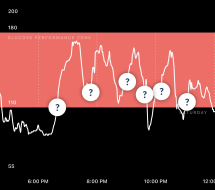
Blood sugar data, night before race
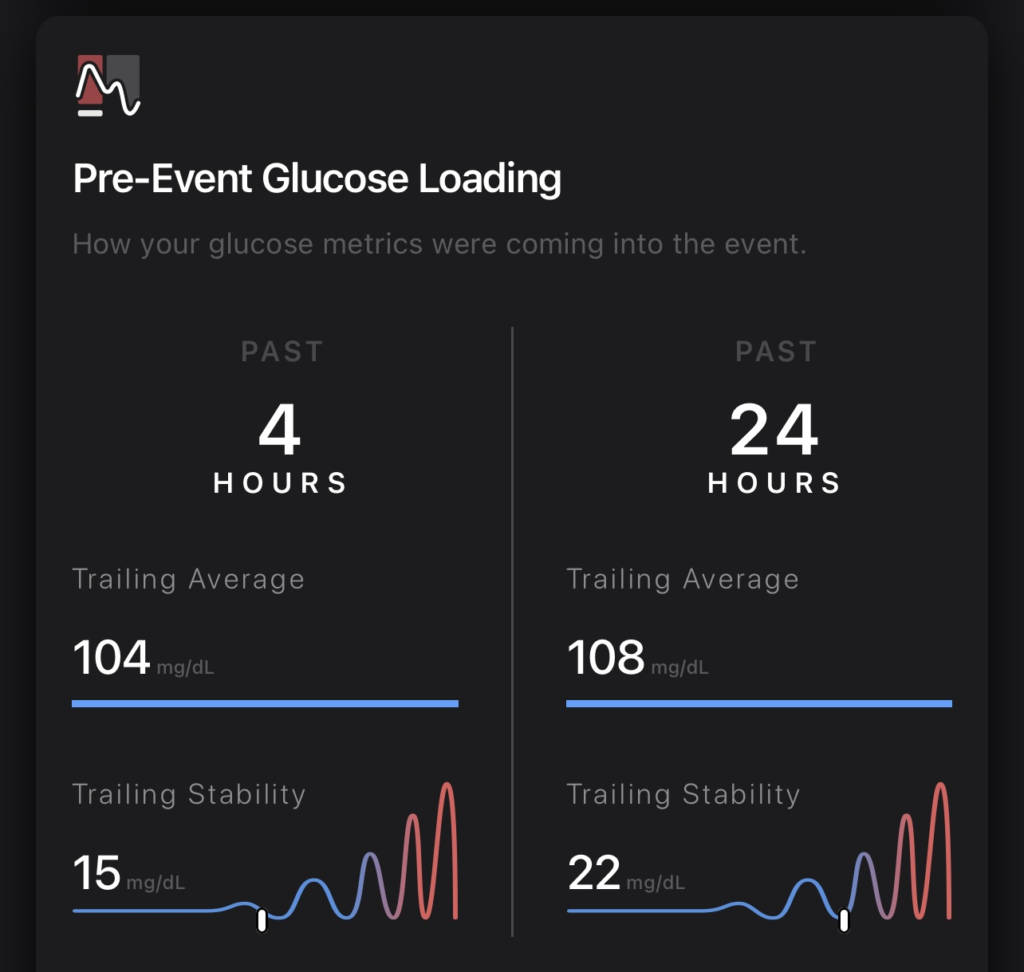
Altitude:
- Best time to arrive in altitude: Last year, I drove to Truckee 3 days before my race. I’ve later learned that arriving 3-6 days prior to a race is the worst time to arrive. My understanding is that 3-6 days in altitude will deplete you, so you might as well come sooner and not expect to be altitude adapted.
Ideally, it’s best to come 3 weeks before the race, if possible. But as that was impractical for me, I decided to drive over on Friday night, 18 hours before my race.
- Supplemental Oxygen – Placebo? Knowing I would not be adjusted to the altitude, you could sell me anything. My friend swears my these Boost Oxygen supplemental oxygen canisters. Sign me up. I had a pocket sized one sitting on the strap of my Camelback and inhaled the oxygen periodically during my race. I do not endorse Boost Oxygen, or even have any idea if it works. But, hey, it distracted me for a bit and made me feel better!
- Hydration: I did a better job this year of staying hydrated at elevation. You need a higher water intake in elevation than at sea level.
Because high altitude air is dryer and has lower air pressure (especially elevations of 8000 feet and above) moisture evaporates quickly from your skin. So, even when you’re working hard and sweating profusely, you may have little visible sign of perspiration on your body. it’s hard to actually tell how much water you’re losing.
Getting High: 5 Must-Know Tips For Staying Hydrated At Altitude
I must have drank 5+ cups of water in the morning prior to the Big Chief 50K. Once again, I entered the race with an empty hydration pack as the first aid station is at mile 3. There are some mean hills to start the race as we run up the Northstar ski slopes, so I filled up my Camelback right at the mile 3 aid station. I made sure to drink two cups of Gatorade at each aid station – something I never did in the past.
Blood Sugar Data (Supersapiens):
Supersapiens
Supersapiens is an Atlanta-based startup that is using CGMs (continuous glucose monitors) to help athletes optimize their training and performance. CGMs provide live data of each individual’s glucose levels, which can be very helpful while racing to help athletes decide when they need to fuel. Supersapiens uses the Abbott Libre Sense, an updated CGM only available in Europe. This is a much better CGM than the Freestyle Libre that is available in the United States, and the version that Levels Health uses. The Libre Sense continuously measures glucose without having to scan your phone to your sensor. The biggest game changer to me, is the fact that it pairs with your Garmin watch, so you can easily see your glucose levels on your watch during the Big Chief 50K without having to pull out your phone.
I wrote about running alongside the Quicksilver 100k winner, Ryan Ung, back in October 2021. He previously worked for Supersapiens and shared how he used his CGM – his main focus is to ensure that he has a glucose floor of 130mg/dl and doesn’t worry about how high it gets.
I wanted to fuel using a similar strategy, but I didn’t have time to order my UCAN. And I’m not carb-phobic, but I can be sugar-phobic and still avoid a number of the fuels that are out there. I wanted to rely on the aid stations – but most of them did not have food. I would drink 2 cups of Gatorade at each aid station.
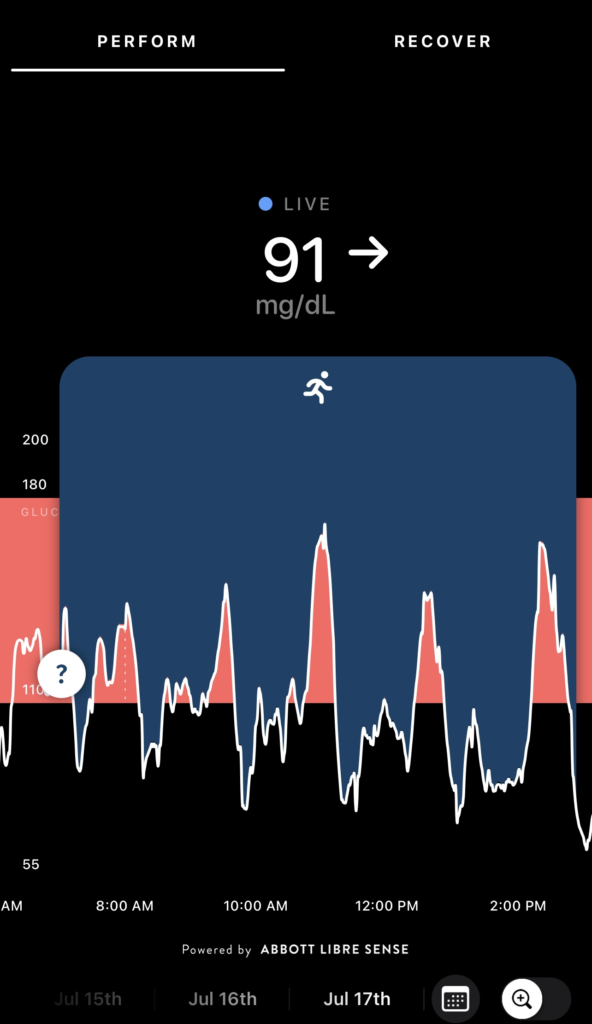
My blood sugar was all over the place. Peter Attia has spoken about how sharp spikes in glucose can sometimes lead to overcompensating releases of insulin and very low glucose numbers shortly thereafter. This puts you on the blood sugar rollercoaster, needing more and more carbs.
The clearest example of this was in the middle of this chart. My friend Jenn gave me a spare sandwich she had. I ate it, ran up a few hills (and felt strong!) and next thing I know my glucose levels dipped to the high 60s. When I saw that dip, I slowed down and bit and let my glucose levels stabilize.
It’s a reminder that if I do want to stick to a carb-fueling strategy, I need to have fuel quite often to fuel any dips that occur. Overall, my Supersapiens app gave me a really low glucose score of 40.
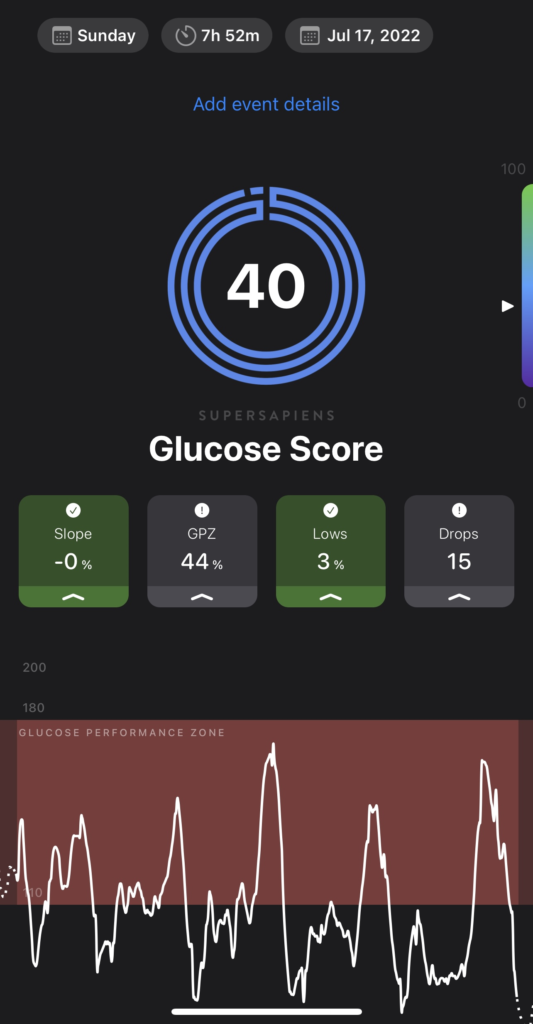
I spent only 44% of the race in the “glucose performance zone”, and only 15% of the race above 130mgl/dl.
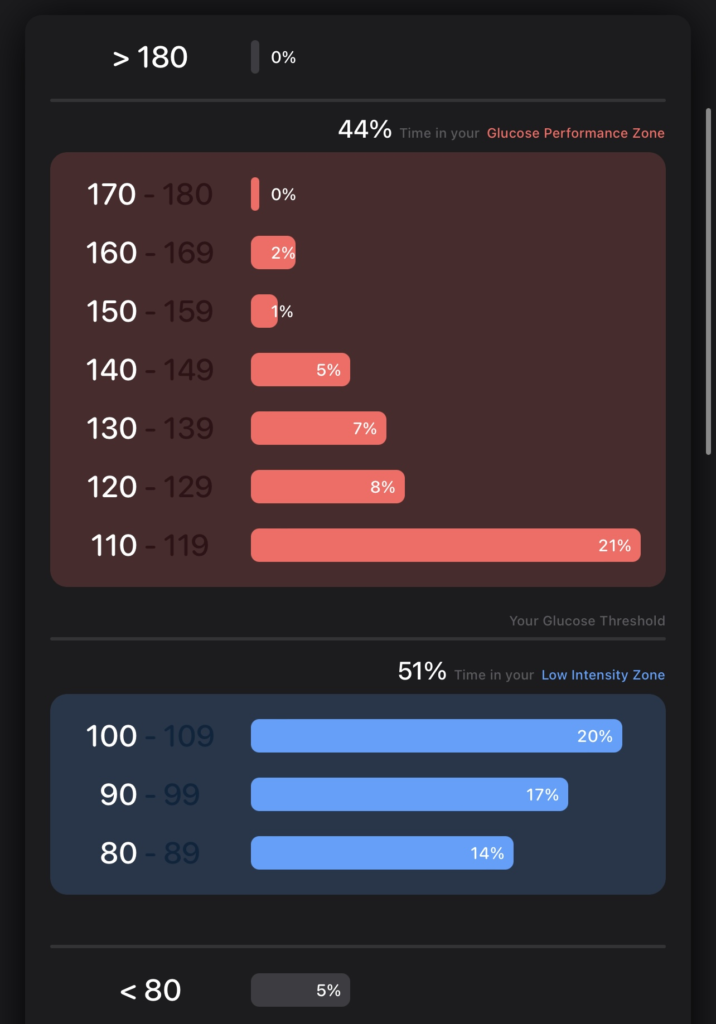
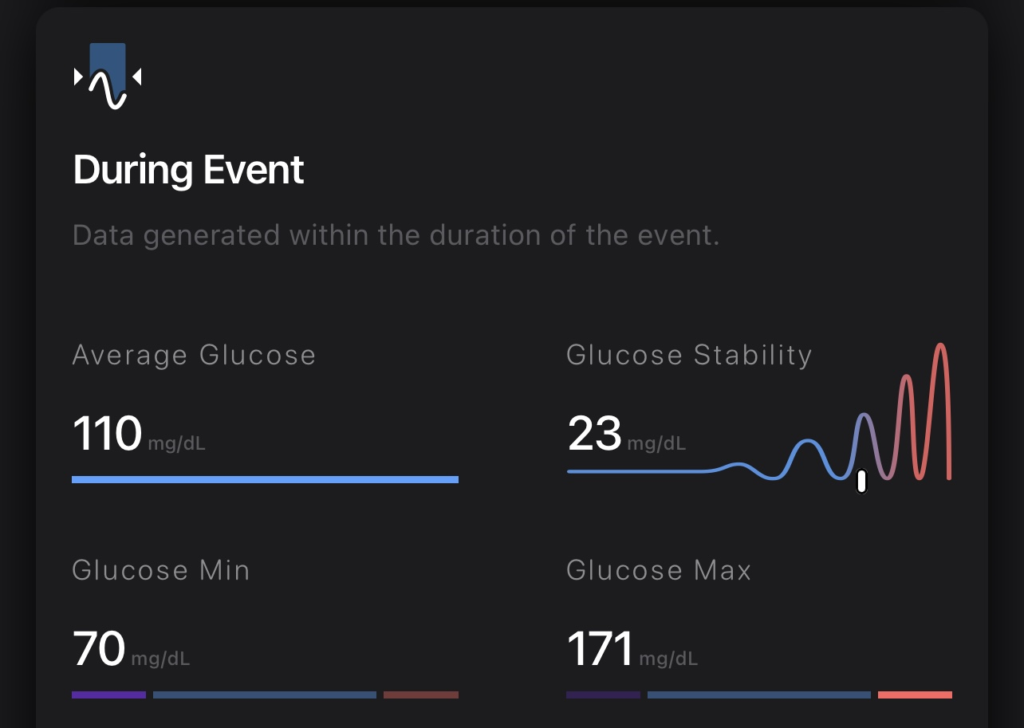
During the NY marathon, I will bring plenty of SPRING gels and UCAN superstarch for the whole race, and keep a strategy of keeping glucose above 130mg/dl at all times!
Another race down with Scott:
I wrote a little about how the East Canyon Marathon was my friend Scott’s first marathon. He was dealing with some injuries back then, and willed out that marathon.
This time around, he came in heavily training (and cross training with biking and swimming) and he killed this race and finished third in our age group. He had exactly the reaction I expected to running his first ultra – enjoying the scenery and camaraderie much more than the marathon running scene. It seems like he made friends with each and every runner on the course haha.
Revisiting my 2021 reflection on running:
“Part of growth is constantly re-inventing yourself. Finding new goals to push towards and being okay NOT being able to do things you used to do.
So here’s to bracing myself for a year where I DON’T run over 1,500 miles. I’m sure I’ll run a few ultramarathons, but my plan is to run 2-3x/week, with one sprint day and one distance day. I’ll pick up biking and other forms of cross-training. And I’ll have a whole lot of personal life goals.”
2022 has been a major year so far – for reasons outside of fitness. I’ve been working on a number of personal and financial matters, in addition to helping my mom reboot her yoga studio and Dreamland expand their gym. This has come at the cost of my training. I haven’t been able to train as much, put on 15lbs, and dealt with COVID when I was getting back into the swing of things.
It’s important to contextualize results. It’s hard not to compare where I am athletically to what I used to be. Overall, I’m proud of my performance and grateful that I was able to make a full recovery from COVID to race.
Next Up: New York Marathon (11/6/2022)
My next race is the New York Marathon on November 6th. This is normally a tough time of the year to periodize my training for, but one that I hope to set aside a good training block for.
One of the themes for me lately has been momentum. Last year, that momentum was towards my run streak. It was harder to not run than it was to run. This year, it’s been towards various financial and personal matters. For this race, I took running ultras for granted and just expected to get it done.
For the New York marathon, I’ll be prepared to mentally dial in to the race starting in September. I’ll be preparing my training schedule, what I’ll be wearing, how I’ll fuel, well before race day. The Big Chief 50k crept around much quicker than I realized, and before I knew it – race weekend was coming up and I didn’t have good shoes, fuel, hydration pack, etc. to race. For New York, I want to start preparing earlier. And just by me starting to think about the race – the momentum will build. Races are really an accumulation of the final 8-12 weeks of both mental and physical preparation. I think I overlooked the mental preparation involved for this race – as I thought I could follow my calendar for total miles per week and be ready. Before the New York marathon, I plan to remove some of my outside commitments – not specifically to fill them with running, but to fill them with downtime. This will allow me to re-calibrate, and not feel like I’m jumping from one thing to the next, and be fully present while I’m training and think about the race ahead. I’m looking forward to giving it my all!
Subscribe to my newsletter!